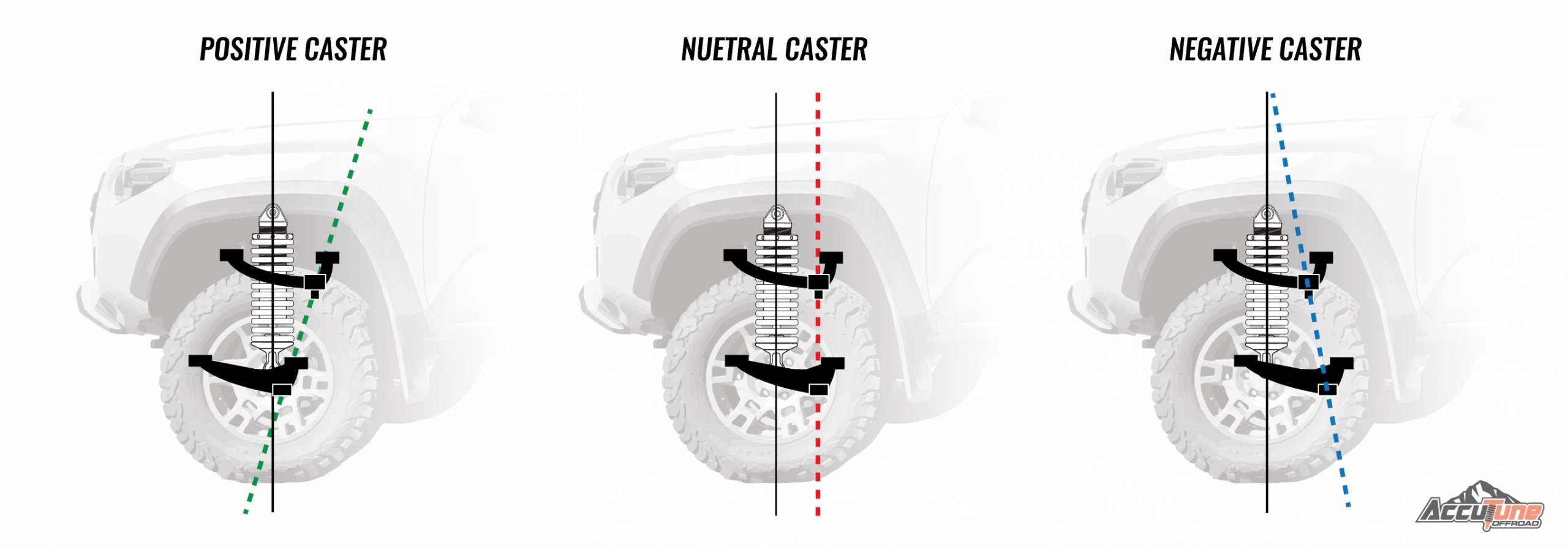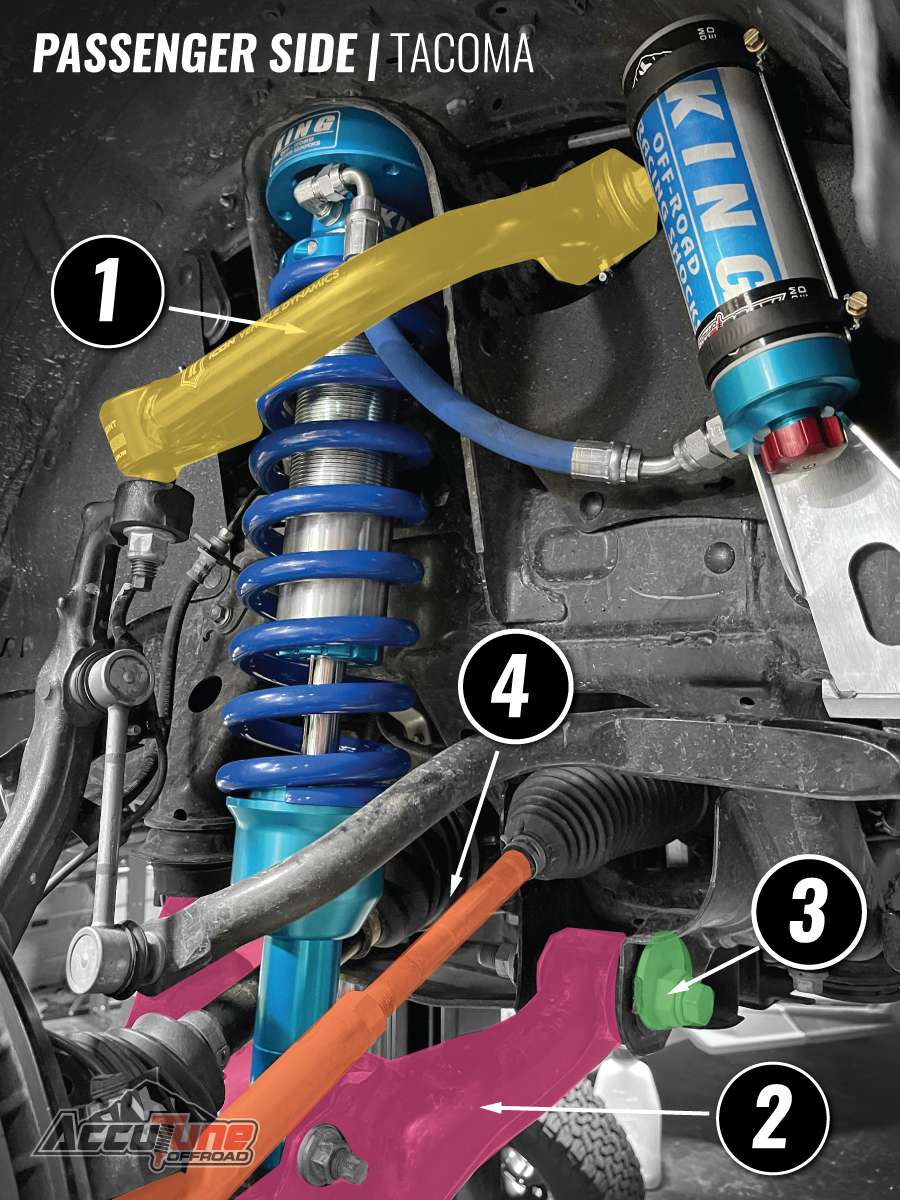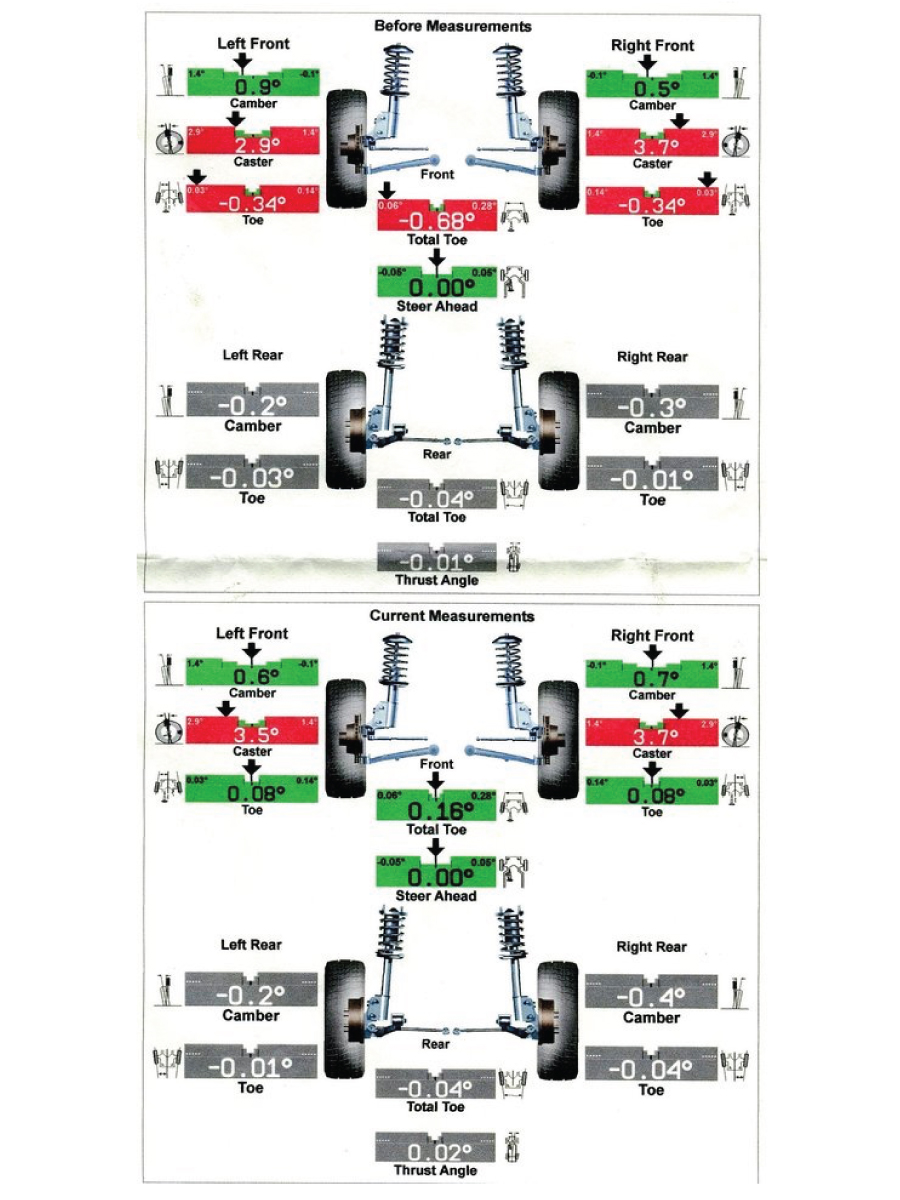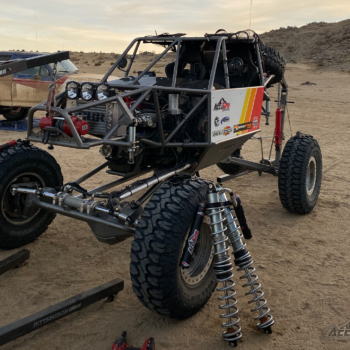Lifting your Toyota Tacoma or 4Runner will almost always require a wheel alignment. The purpose of this article is to review the front suspension and steering on a Tacoma & 4Runner, and explain how an alignment works. This article is not intended to be a DIY Alignment article. We recommend you have an alignment done by a trained professional.
-
PART 1
- What is an alignment?
- Why you need an alignment
- What is Camber, Caster & Toe?
- How adjustments are made for an alignment
- Cam Tab Adjusters
- Why is a UCA needed when lifting your Tacoma?
- How much lift before UCA is needed?
- Ideal alignment setup for a lifted Tacoma
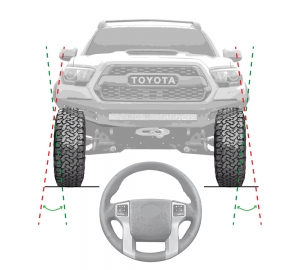
What is a Wheel Alignment?
Alignment refers to a series of adjustments on a vehicle’s front suspension and steering components to make sure the vehicle steers and handles correctly. The key to proper alignment is adjusting the angles of the tires which affects how they make contact with the road. Adjustments will be made to get the appropriate amount of camber, caster and toe.
Why would you need to get an alignment?
It’s very common for vehicles to get an alignment after service work has been performed on the front suspension. Replacing things like steering joints, control arms, and shocks may require an alignment afterwards. Hard off-road driving may also cause the suspension to loosen up and need to be re-aligned.
What is Camber, Caster, Toe?
Caster:
Caster, which is also referred to as caster angle, is the top to bottom angle of the steering axis and suspension components compared to vertical.
Camber:
Facing the front of the vehicle, Camber is the angle of the tire & wheel relative to the vehicle. Depending on which direction the wheel is tilted, it has either positive camber or negative camber. When the top of the tires tilt away from the center of the vehicle you have positive camber, and when the top of the tires are tilted inward you have negative camber. Varying camber angles have different effects on your vehicle and tire wear.
TOE:
This refers to how much the tires are pointed inward.
Components that will be adjusted during alignment
1. Upper Control Arm 2. Lower Control Arm 3. Front Cam Tab 4. Tie Rod
Example: Alignment print out from a professional alignment shop.


